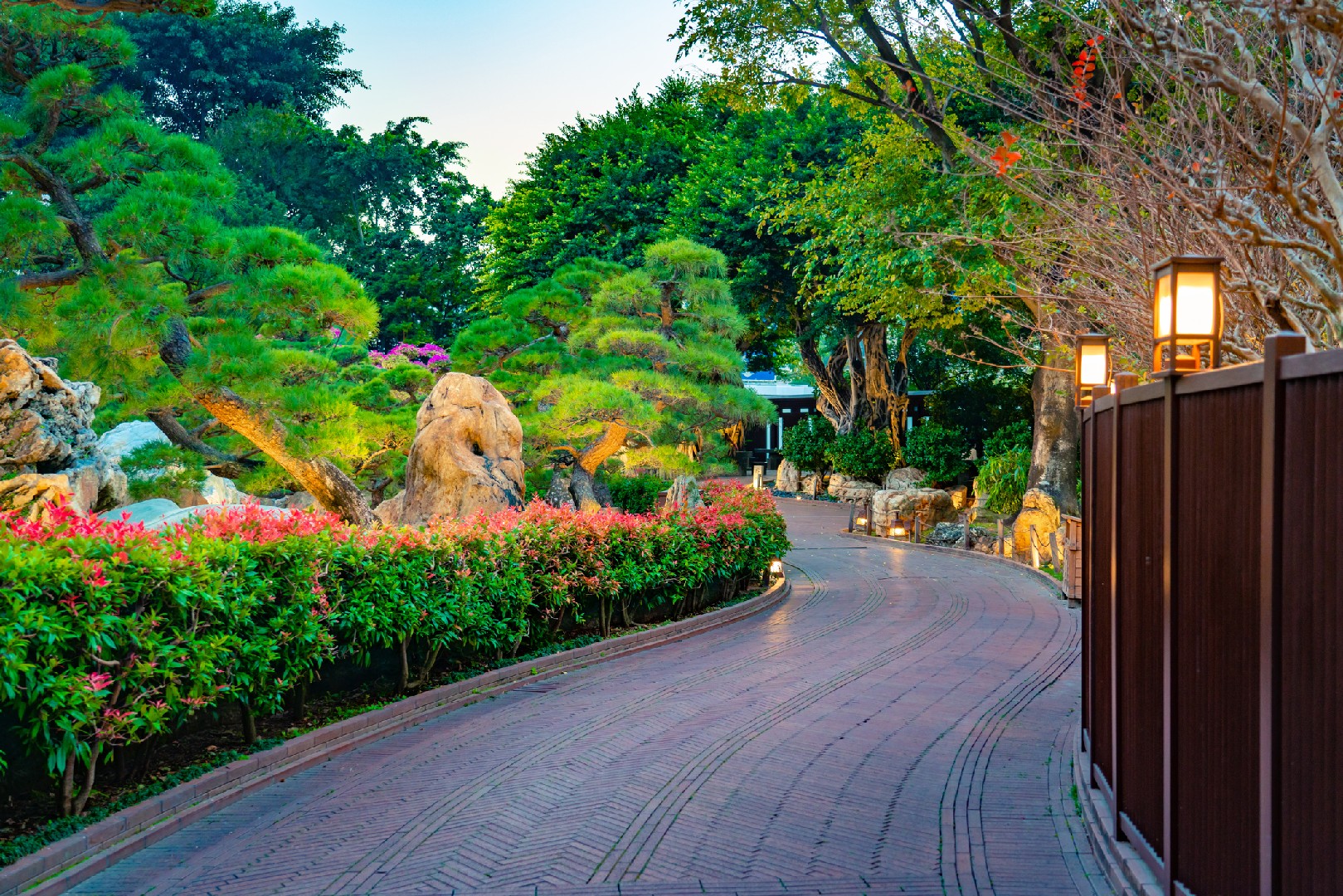![Rectangle]()
The Philosophy of Zen Illumination in Japanese Gardens
Zen illumination is a central aspect of Japanese garden design, as it embodies the principles of Zen philosophy and enhances the overall tranquility and harmony of the space. In order to understand the significance of Zen illumination, it is important to delve into the core concepts of Zen and how they inform the use of lighting in these gardens.
Zen is a school of Mahayana Buddhism that originated in China and was later introduced to Japan, where it deeply influenced various aspects of Japanese culture, including garden design. At its core, Zen emphasizes mindfulness, meditation, and the expression of beauty through simplicity. These principles are reflected in the deliberate and mindful placement of lighting elements in Japanese gardens.
One of the key tenets of Zen philosophy is the pursuit of balance and harmony. This is evident in the way lighting is used in Japanese gardens. The illumination is carefully designed to create a sense of equilibrium between light and shadow, creating a serene and contemplative atmosphere. By striking a delicate balance between light and darkness, Zen illumination encourages visitors to slow down, reflect, and find inner peace amidst the hustle and bustle of daily life.
Another important aspect of Zen illumination in Japanese gardens is its ability to evoke tranquility. Soft, warm lighting is often employed to create a soothing ambiance that calms the mind and nurtures a sense of serenity. This type of lighting helps to create a gentle and inviting space, encouraging visitors to connect with nature and find respite from the demands of modern living. Whether it is the gentle glow of lanterns or the subtle illumination of pathways, Zen illumination serves as a reminder to slow down and appreciate the present moment.
Zen illumination also embraces the concept of reflection, both literally and metaphorically. The use of water features in Japanese gardens, such as ponds or streams, allows for the reflection of light, creating a mesmerizing effect that adds depth and dimension to the overall design. In addition to this literal reflection, Zen illumination also encourages visitors to engage in introspection and self-reflection. By creating a contemplative environment, lighting in Japanese gardens prompts individuals to explore their inner thoughts and emotions, fostering a deeper understanding of oneself and the world around them.
To translate Zen concepts into lighting elements, Japanese garden designers often use traditional fixtures such as stone lanterns, tsukubai (a low washbasin for ritual cleansing), and tōrō (traditional lanterns). These fixtures are not only functional but also serve as aesthetic focal points, adding a touch of authenticity and cultural richness to the garden. Furthermore, the placement of these fixtures is meticulously considered, ensuring that they harmonize with the surrounding natural elements and contribute to the overall balance and serenity.
In conclusion, Zen illumination plays a crucial role in Japanese garden design, promoting balance, tranquility, and reflection. By incorporating the principles of Zen philosophy into the thoughtful placement of lighting elements, these gardens provide visitors with a space to slow down, find inner peace, and connect with nature. Whether it is through the delicate balance between light and shadow, the soothing ambiance created by warm lighting, or the reflection both literal and metaphorical, Zen illumination invites individuals to engage in a deeper level of contemplation and self-discovery. So the next time you visit a Japanese garden, take a moment to appreciate the artistry and intention behind the lighting design, and allow yourself to be immersed in the tranquility that it offers.





